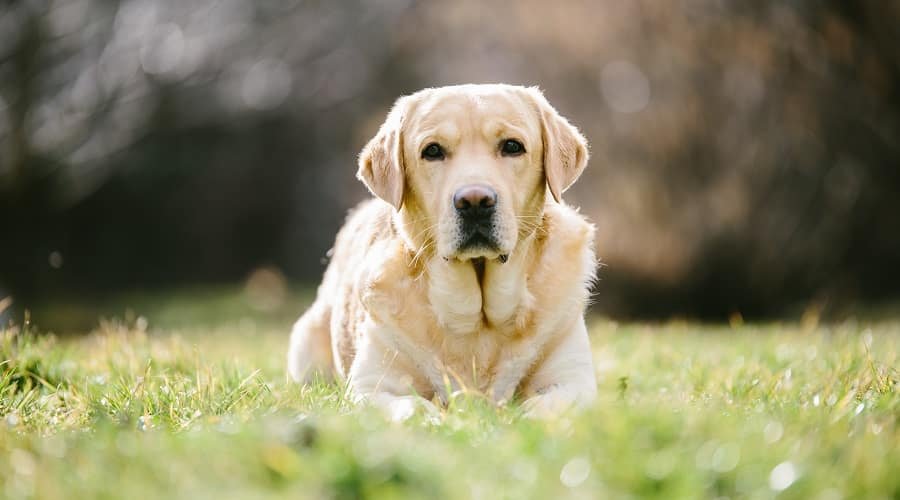Before we talk about Long-Haired Labradors, lets us know little about labradors. Labrador Retrievers are one of the most popular dog breeds in the world, known for their intelligence, loyalty, and friendliness.
Table of Contents
They usually have a short, thick, and water-resistant coat that comes in three colors: black, yellow, and chocolate.
However, some Labradors have a longer, wavier, and silkier coat that is not typical of the breed. These are called long-haired Labradors, and they are the result of a rare genetic combination.
In this guide, we will cover everything you need to know about long-haired Labradors, from their origins and recognition to their traits and care. We will also answer the question: are they pure breed?
Origins and Recognition of Long-Haired Labradors
The modern Labrador Retriever was developed in the 1800s by English breeders who imported water dogs from Canada. These dogs were used for retrieving game from water, especially in cold and harsh conditions. Therefore, they needed a coat that was short, dense, and weather-resistant to keep them warm and dry.
It is not clear how the long-haired gene entered the Labrador gene pool, but one theory is that early breeders used other long-haired retriever breeds, such as the Flat-Coated Retriever or the Golden Retriever, to improve the Labrador’s appearance and temperament.
The long-haired gene is recessive, which means that both parents need to carry it for their offspring to have a long coat. This is why long-haired Labradors are rare and unpredictable.
Long-haired Labradors are still considered purebred Labradors, as long as they have a pedigree that proves their ancestry. They are eligible for registration with major kennel clubs, such as the American Kennel Club (AKC), the United Kennel Club (UKC), and the Kennel Club (KC).
However, they are not accepted for conformation shows, as they do not meet the breed standard for the coat. The breed standard states that the coat should be “short, straight and very dense, giving a fairly hard feeling to the hand” and that “woolly coats, soft silky coats, and sparse slick coats are not typical of the breed”.
A slight wave down the back is permissible, but not desirable.
Labrador retrievers and their long coats

Labrador retrievers are an adorable breed of dogs with long coats. Their coats can be black, brown, yellow, or anything in between.
They are also good-natured and friendly dogs who love every person they meet. Labrador retrievers are commonly used as animal therapy pets because of their sweet personality and cuddly nature.
A lot of Labradors will shed heavily during the warmer summer months, but most will shed year-round.
Also Read: Potty Training a Stubborn Puppy | Tips, and Tricks Involved in it.
Labrador retrievers are known for their expressive eyes and thick, long coats, but many people don’t know that there are two different types of Labrador retrievers.
Rough-coated Labradors have a short, dense coat that has more hair on the body while the smooth-coated Labradors are bred to have a long, shiny coat.
The longer coat can require more maintenance than the shorter ones, so it is very important to brush your pup’s coat every day.
Are Long-Haired Labradors Purebreds?
Are long-haired Labrador Retrievers purebreds? The answer is surprisingly complicated. Purebred dog breeds go through several steps to confirm their lineage and maintain purity.
However, it is possible for an unfixed hybrid to occur which can skew numbers.
Labradors are currently undergoing a re-evaluation process, the goal of which is to establish that they are not just any mixture of dogs but a breed in themselves.
Although the Labrador retriever is a well-known breed, it is unclear whether all labs have long hair.
Labradors with short hair tend to come from the United Kingdom and Canada, while those with long hair mainly come from the United States.
The reason for this difference in coat type is unknown, but some say that the longer-haired Labradors may be purebreds.
Why are long-haired Labs not very common?
Labradors are known for their curly, long-haired coat and Labrador Retrievers with short hair are not common.
The genetics of the Labradors do not allow for a long hair gene to be passed on and they cannot produce offspring of the same kind.
There is still some debate over which of the Labradors originated from and there is no one theory that has been agreed upon.
The problem with long-haired Labrador Retrievers is that they are often more prone to skin irritation.
Long hair, in general, does not allow the skin surface to breathe properly which can lead to infected/irritated skin.
Traits and Personality of Long-Haired Labradors
Long-haired Labradors share the same physical and behavioral traits as short-haired Labradors, except for the length and texture of their coat. They are medium to large-sized dogs, with a strong and athletic build, a broad head, a friendly expression, and a thick tail. They have a high energy level and need regular exercise and mental stimulation to stay healthy and happy. They are also very social and affectionate dogs, who love to be around people and other animals. They are easy to train, as they are eager to please and respond well to positive reinforcement.
The main difference between long-haired and short-haired Labradors is their coat. Long-haired Labradors have a longer, softer, and wavier coat than short-haired Labradors. Their coat may also be thinner and less dense, making it less suitable for cold and wet environments. Their coat may vary in length and wave, depending on the genes they inherit from their parents. Some long-haired Labradors may have a slight wave, while others may have a curly or fluffy coat. Their coat may also have feathering on the ears, chest, legs, and tail, giving them a more elegant appearance.
Care and Grooming of Long-Haired Labrador
Long-haired Labradors require more grooming and maintenance than short-haired Labradors, due to their longer and finer coat. Their coat may be more prone to matting, tangling, and shedding, especially during seasonal changes. They also need more frequent brushing and bathing, to keep their coat clean and healthy. Here are some tips on how to care for and groom a long-haired Labrador:
- Brush their coat at least once a week, using a slicker brush or a pin brush, to remove loose hair and prevent mats. Start from the head and work your way down to the tail, following the direction of the hair growth. Be gentle and avoid pulling or tugging on the hair. Pay extra attention to the areas where the hair is longer or wavier, such as the ears, chest, legs, and tail.
- Bathe them once a month, or as needed, using a mild dog shampoo and conditioner. Wet their coat thoroughly and apply the shampoo, massaging it into the skin and hair. Rinse well and repeat with the conditioner, leaving it on for a few minutes before rinsing again. Dry them with a towel or a blow dryer, and brush their coat again to remove any tangles.
- Trim their nails every two to four weeks, using a nail clipper or a grinder, to prevent them from growing too long and causing discomfort or injury. Check their ears regularly and clean them with a cotton ball and a dog ear cleaner, to prevent ear infections. Brush their teeth daily or at least weekly, using a dog toothbrush and toothpaste, to prevent dental problems.
Health and Lifespan of Long-Haired Labradors
Long-haired Labradors have the same health and lifespan as short-haired Labradors, as they are the same breed. They are generally healthy and robust dogs, but they may be prone to some genetic and environmental health issues, such as:
- Hip dysplasia and elbow dysplasia: These are conditions where the joints of the hips or elbows do not fit properly, causing pain, inflammation, and arthritis. They are inherited from the parents and can be diagnosed by X-rays. They can be treated by medication, surgery, or weight management.
- Eye problems: These include cataracts, progressive retinal atrophy, and retinal dysplasia, which can affect the vision and lead to blindness. They are also inherited from the parents and can be detected by eye exams. They can be treated by medication, surgery, or supplements.
- Obesity: This is a condition where the dog is overweight, which can affect their mobility, breathing, and heart function. It is caused by overfeeding, lack of exercise, or hormonal imbalance. It can be prevented and treated by feeding a balanced diet, measuring the food portions, and increasing the physical activity.
- Allergies: These are reactions to certain substances, such as food, pollen, or fleas, that cause itching, scratching, and skin infections. They can be diagnosed by blood tests or elimination diets. They can be treated by avoiding the allergens, using antihistamines, or applying topical creams.
The average lifespan of a Labrador Retriever is 10 to 12 years, but some may live longer or shorter, depending on their health and care. To ensure a long and happy life for your long-haired Labrador, you should provide them with a high-quality diet, regular veterinary check-ups, vaccinations, and parasite prevention.
Cost and Where to Buy a Long-Haired Labrador

The cost of a long-haired Labrador may vary depending on the breeder, the location, the pedigree, and the demand. Generally, long-haired Labradors are more expensive than short-haired Labradors, as they are rarer and more sought-after. The average price of a long-haired Labrador puppy may range from $1,000 to $3,000, but some may cost more or less.
The best place to buy a long-haired Labrador is from a reputable breeder who has a proven track record of producing healthy and well-socialized puppies. You should avoid buying from pet stores, online ads, or backyard breeders, as they may not have the best interest of the dogs or the buyers in mind. They may also sell puppies that are not purebred, not vaccinated, or not health-tested.
To find a good breeder, you should do some research and ask for recommendations from other dog owners, veterinarians, or breed clubs. You should also visit the breeder’s premises and meet the parents and the litter of the puppy you want to buy. You should ask the breeder for the following documents and information:
- The pedigree and registration papers of the puppy and the parents
- The health certificates and test results of the puppy and the parents
- The vaccination and deworming records of the puppy
- The contract and guarantee of the sale
- The socialization and training methods of the puppy
- The feeding and grooming instructions of the puppy
Short-Haired vs. Long-Haired Labrador
| Feature | Short-Haired Labrador | Long-Haired Labrador |
|---|---|---|
| Coat length | Short, about 1 inch | Long, up to 4 inches |
| Coat texture | Coarse, thick, and dense | Soft, fine, and wavy |
| Coat colors | Black, yellow, and chocolate | Same as short-haired, plus silver, charcoal, and fox red |
| Coat maintenance | Low, requires brushing once or twice a week and bathing every two or three months | High, requires brushing at least once a week and bathing once a month |
| Coat suitability | Good for cold and wet environments, provides insulation and protection | Not so good for cold and wet environments, may get wet and matted |
| Genetic origin | Original and standard type of the breed, inherited from Canadian water dogs | Rare and non-standard type of the breed, inherited from a recessive gene (FGF5 or L) |
| Recognition | Recognized by all major kennel clubs, accepted for conformation shows | Recognized by all major kennel clubs, not accepted for conformation shows |
| Personality | Intelligent, loyal, friendly, energetic, social, and easy to train | Same as short-haired |
| Health and lifespan | Generally healthy, prone to some genetic and environmental issues, average lifespan of 10 to 12 years | Same as short-haired |
The short-haired Labrador is the original and standard type of the breed, and it is recognized by all major kennel clubs, such as the American Kennel Club (AKC), the United Kennel Club (UKC), and the Kennel Club (KC). The breed standard states that the coat should be “short, straight and very dense, giving a fairly hard feeling to the hand” and that “woolly coats, soft silky coats, and sparse slick coats are not typical of the breed”. A slight wave down the back is permissible, but not desirable.
The long-haired Labrador is a rare and non-standard type of the breed, and it is the result of a recessive gene that affects the coat length and texture.
The long-haired gene is called the fibroblast growth factor 5 gene, or the FGF5 gene, or the L gene by the Labrador breeder community. The L gene has two alleles (forms): L, which is the gene for short hair, and l, which is the gene for long hair. L is the dominant allele, and l is the recessive allele.
This means that both parents need to carry the l allele for their offspring to have a long coat. This is why long-haired Labradors are rare and unpredictable.
Long-haired Labradors are still considered purebred Labradors, as long as they have a pedigree that proves their ancestry. They are eligible for registration with major kennel clubs, but they are not accepted for shows, as they do not meet the breed standard for the coat.
The main difference between short-haired and long-haired Labradors is their coat. Short-haired Labradors have a shorter, coarser, and thicker coat than long-haired Labradors. Their coat is also more suitable for cold and wet environments, as it provides insulation and protection. Short-haired Labradors come in three colors: black, yellow, and chocolate.
Long-haired Labradors have a longer, softer, and wavier coat than short-haired Labradors. Their coat may also be thinner and less dense, making it less suitable for cold and wet environments. Their coat may vary in length and wave, depending on the genes they inherit from their parents.
Some long-haired Labradors may have a slight wave, while others may have a curly or fluffy coat. Their coat may also have feathering on the ears, chest, legs, and tail, giving them a more elegant appearance. Long-haired Labradors may also come in different colors, such as silver, charcoal, or fox red.
Conclusion
Long-haired Labradors are purebred Labradors that have a longer and wavier coat than the typical short-haired Labradors. They are the result of a recessive gene that is rare and unpredictable. They share the same traits and personality as short-haired Labradors, except for their coat. They are intelligent, loyal, and friendly dogs that make great family pets.
They require more grooming and maintenance than short-haired Labradors, but they have the same health and lifespan. They are more expensive and harder to find than short-haired Labradors, but they are worth it for their unique and beautiful appearance.
We hope this guide has helped you learn more about long-haired Labradors and answered your question: are they pure breed? If you are interested in owning a long-haired Labrador, you should look for a reputable breeder who can provide you with a healthy and well-bred puppy. You should also be prepared to provide your long-haired Labrador with the best care and love possible, to ensure a long and happy life together.

